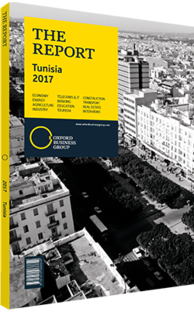Moncef Boussannouga Zammouri, Managing Partner, KPMG: Viewpoint
Viewpoint: Moncef Boussannouga Zammouri
To address slow economic growth and increasing public debt, Tunisia has recently undertaken important economic reforms. Reforms include the Law on Private-Public Partnerships (PPPs) and the new Investment Law 2016, which aimed to ease the regulatory, administrative and financial environment for investment. Tax, monetary and exchange rate policies have also been recently reviewed. A prudent monetary policy has been adopted, resulting in a reversal of the upward inflation trend, despite the appreciation of foreign currencies. The objective is to reach greater flexibility in exchange rates to ease foreign exchange regulations.
Moreover, a new budget policy favouring public investment was announced in the government’s new budget for 2017. To limit indebtedness, the Finance Law 2017 provides for a 15.7% tax revenue increase whereas GDP would only increase by 7% at current prices. Additional revenues would, therefore, come from new tax measures, including a new transitional profit tax, and measures to address the informal economy.
The Tunisian tax burden, excluding social security, represents 22% of GDP, which is close to the 25% average rate of OECD countries. Social security represents 8.6% of GDP in Tunisia, compared with an average of 9.1% in the OECD countries. Export activities continue to benefit from tax incentives — a 10% tax on profits — as well as new initial public offerings. An increase in the tax burden would only encourage the informal economy and therefore reduce collected taxes, as has occurred in other countries. The government has adopted measures to fight tax evasion. A programme to fight corruption is in progress in association with the facilitation of administrative procedures to speed up the implementation of decisions.
The trend in Tunisia has been to reduce income-tax rates from 35% to 30% and then to 25% — excluding the telecoms, banking and oil industries — while taxing dividends. This trend should continue in order to attract foreign direct investment (FDI). FDI attractiveness in Tunisia will therefore remain, in the short run, closely linked to exports. Special attention has to be paid to the exchange rate policy in order to avoid a real appreciation of the Tunisian dinar.
In the medium term, Tunisia can become a regional centre to produce goods and services for the Maghreb region by opening some industries such as health, logistics and others to PPPs and foreign investment. These activities would be upgraded to international standards and would satisfy local and neighbouring countries’ demand. Indeed, the reconstruction of Libya offers partnership opportunities between foreign investors and Tunisian investors in order to meet Libyan demand in the upcoming transitional phase. The upward outlook for oil prices, confirms the region’s high purchasing power and its substantial need for imports.
In the long term, Tunisia can become an international financial centre as it can offer the very same advantages that have been presented by Malta, namely its geographical proximity to Europe, its access to ports and trade agreements with the EU, provided that an appropriate institutional framework is offered. Setbacks for Mediterranean financial centres as a result of EU regulations and constraints will open up opportunities for new financial centres in the Mediterranean region. Recently, Casablanca embarked on a financial city experience, with a special status granting tax advantages and an unconstrained foreign exchange regime, without being classified as an offshore city.
The success of Tunisia’s democratic transition has to be accompanied by sustained economic growth, which can only be achieved through strong FDI inflows aimed at meeting local and neighbouring countries’ demand. The international investment conference, Tunisia 2020, showed the availability of bilateral and multilateral international funding, having identified some $16bn of available funding. These funds need to be quickly translated into tangible contracts tied to clearly identified and profitable economic projects.
You have reached the limit of premium articles you can view for free.
Choose from the options below to purchase print or digital editions of our Reports. You can also purchase a website subscription giving you unlimited access to all of our Reports online for 12 months.
If you have already purchased this Report or have a website subscription, please login to continue.

